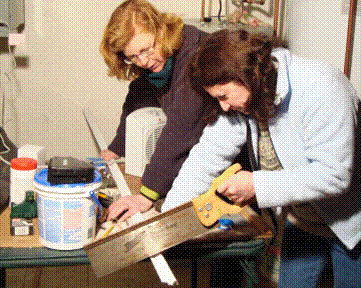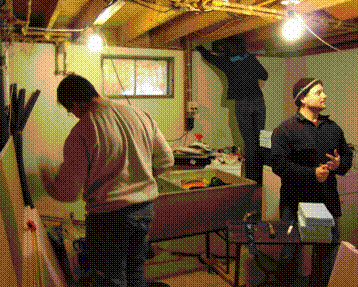| . Home Energy Efficiency Team 2010 |
||||||||||||||||||||||||||||||||||||||||||||||||||
|
|
||||||||||||||||||||||||||||||||||||||||||||||||||
|
HEET in January 30, 2010
A Green Marlborough group had fun weatherizing Amy's house and reduced air infiltration 28%!*
A special thanks to experts Audrey and Jason from Cambridge (www.HEETMA.com) who taught us to evaluate and weatherize a home. Thanks, too, to our neighbors in Maynard and Acton who came. A great big thank you to Green Marlborough and community members who came. This was an excellent teaching/learning experience for us to build on.
The weatherization projects were:
|
||||||||||||||||||||||||||||||||||||||||||||||||||












